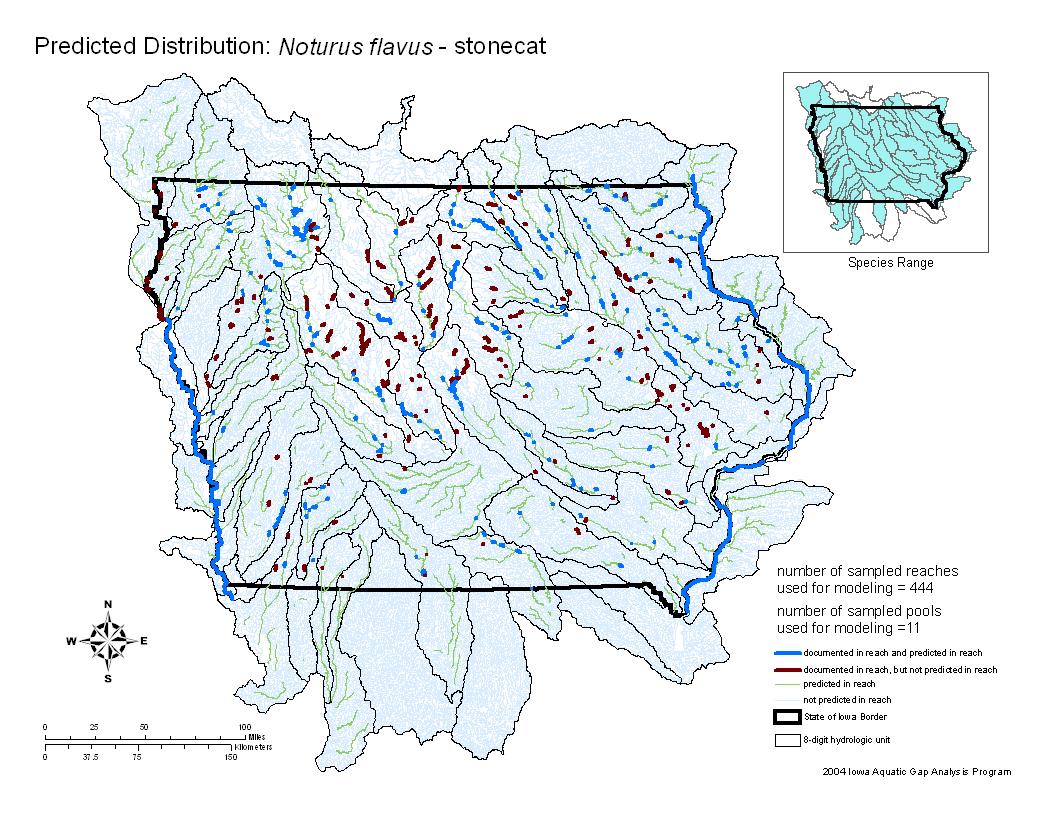Fish Iowa - Fish Species - Stone Cat

Characteristics
Body color is yellowish-green to olive above and light below. The premaxillary band of teeth, a pad-like band on the upper jaw, is U-shaped, and the chin barbels are yellow. There are usually 16 rays in the anal fin. This fish has been known to reach 12-inches long, but it rarely exceeds 6- to 8-inches. Most anglers can distinguish this species from the other catfishes, but some confuse them with the young of other species.
Foods
- No results found
Expert Tip
- No results found
Details
The Stone Cat, together with the other madtoms, represents the smallest fish in the catfish family. The Stone Cat spawns in spring and, like all catfish, builds a nest and guards the eggs and young. Madtoms show nocturnal behavior and probably spawn in areas of darkness, like under rocks or in bank hides. The Stone Cat is the largest of the madtoms and lays between 500 and 1,000 eggs at a time. It prefers stream riffle habitats, but is also found under rocks or weedy shorelines of lakes and ponds.
Like most catfish, they are omnivorous and extremely adaptable in seeking food items in ponds and lakes.
Recent stream sampling information is available from Iowa DNR's biological monitoring and assessment program.
Distribution Map

Common in swift-flowing streams and widely distributed in the interior streams; taken occasionally in some of the natural lakes and in the Mississippi River.
See our most recent distribution data for this species on the Iowa DNR's Bionet application.
State Record(s)
No state record exists for this species
Submit your potential recordMaster Angler Catches
No Master Angler catches currently exist for this species.
Submit your Master Angler catchFish Surveys
Tip: Click Species Length by Site, then use the dropdown to filter by fish species of interest.Where this Fish Is Found
Bear Creek
Big Sioux River
East Nodaway River
Little Sioux River (Correctionville to Missouri R)
Little Sioux River (state line to Linn Grove)
Missouri River (Council Bluffs to state line)
Missouri River (Little Sioux to Council Bluffs)
Missouri River (Sioux City to Little Sioux)
Wapsi River (Trout Section)
West Fork Grand River